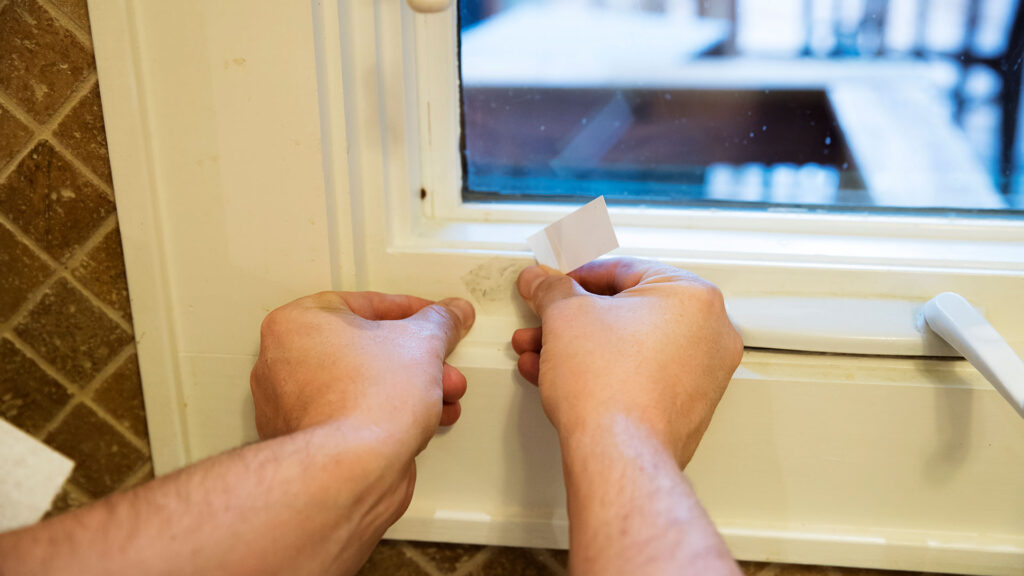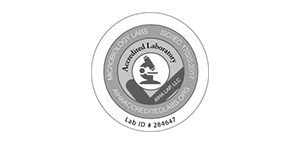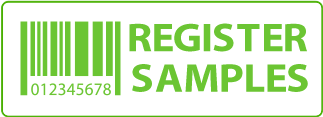
Home Mold Test Kit: A Comprehensive Guide for Accurate Results
Home Mold Test Kits by My Mold Detective
Mold can be a serious concern for homeowners, as it can have negative effects on both the integrity of the building and the health of its occupants. Home mold test kits provide a way to detect the presence of mold in your living space so you can address potential issues before they escalate. By understanding how to use these kits and interpret the results, you can make informed decisions about remediation and prevention efforts.
Home mold test kits come in a variety of types, including surface tests and air tests. Surface tests involve swabs or tape strips that collect samples from furniture, floors, and walls, while air tests detect mold spores in the air. When used correctly, these kits can give you valuable information about the mold levels in your home, allowing you to take the necessary steps to mitigate the issue.
It’s essential to follow the instructions on your home mold test kit carefully so you can accurately gauge the extent of the mold problem. Remember, even though these kits can help detect mold, they may not provide a comprehensive solution to mold removal or remediation. In some cases, it might be necessary to call a professional mold specialist who can assess the mold situation more thoroughly and offer expert guidance on how to handle it.
Key Takeaways
- Home mold test kits detect mold in your living space, helping you address issues early on.
- Surface tests and air tests are the two main types of home mold test kits.
- Knowing how to use a test kit properly and interpret results is crucial for tackling mold problems effectively.
Understanding Home Mold Test Kits
As we explore home mold test kits, it is essential to understand the types and benefits of using these tools. Home mold test kits can help us identify and quantify the presence of mold in our living spaces. They often include options for testing mold on surfaces or in the air, allowing us to address potential mold issues before they worsen.
In general, we can expect mold test kits to fall under two categories: surface tests and air tests. Surface tests, such as swabs and tape strips, help us detect mold on furniture, floors, or walls. Air tests, on the other hand, can identify mold spores present in the air. It’s vital for us to select the appropriate test method based on our specific needs and concerns.
Many mold test kits include an option for professional lab evaluation. While this usually incurs an additional fee of around $30 or more per sample, some kits, like the Health Metric Mold Test Kit, include testing fees for up to three samples. Lab testing can provide more accurate and detailed results, especially when dealing with different types of mold organisms.
When using a home mold test kit, we need to follow the instructions carefully to ensure accurate results. This may involve collecting samples from various locations, sealing them properly, and sending them off for testing. We should then wait for the lab results to determine the type and concentration of mold organisms present in our homes.
It is crucial to remember that while home mold test kits can provide valuable information about mold presence, they cannot replace a professional mold inspection. In cases of severe mold issues or persistent problems, it is always best to consult with a professional for further evaluation and remediation advice.
In summary, home mold test kits give us an accessible and affordable way to detect mold in our homes. By understanding the types of tests available and using them correctly, we can take initial steps towards maintaining a healthier living environment and addressing mold issues promptly.

Types of Home Mold Test Kits
As we explore different types of mold test kits available for home use, it becomes clear that various options cater to different needs and preferences. In this section, we’ll specifically focus on Culture Plate Test Kits, Surface Sampling Test Kits, and Instant Mold Test Kits.
Culture Plate Test Kits
Culture Plate Test Kits are a popular choice for detecting mold in the air and on surfaces. These kits typically include petri dishes filled with a growth medium that supports mold growth over a period of days. Homeowners can use these kits to collect air samples or take swabs of surfaces suspected of harboring mold. After the required incubation period, usually between 48-72 hours, the plates will reveal the mold colonies that have developed, allowing for visual assessment of potential mold issues. While these kits don’t always provide precise identification of mold species, they offer a simple and cost-effective method to identify the presence of mold in your home.
Surface Sampling Test Kits
Surface Sampling Test Kits focus on collecting and analyzing mold samples from various surfaces in your home. These kits typically use adhesive tapes or swabs for collection and often involve sending samples to a professional laboratory for analysis. Results can include more accurate identification of mold species, as well as clearer guidance on the appropriate remediation steps. However, surface sampling test kits can be more expensive than other options, as they usually require additional fees for the lab analysis.
- Adhesive Tapes: Used to collect mold samples by pressing a sticky surface against a moldy area.
- Swabs: A swab is used to collect mold samples by swiping it across the suspected area.
Instant Mold Test Kits
For those seeking immediate results, Instant Mold Test Kits might be the ideal solution. These kits provide faster feedback by using chemical reactions to identify the presence of mold. Homeowners can quickly apply the testing solution or strip to a potentially moldy area, and if a color change occurs, it indicates mold presence. Instant mold test kits are excellent for a quick confirmation but may not provide detailed information about the specific type of mold or its concentration. However, they are generally easier to use and require minimal waiting time for results compared to other options.
How to Use a Home Mold Test Kit
Sampling Indoor Air
To start using a home mold test kit, we first need to sample the indoor air. Open the mold test kit and follow the instructions provided by the manufacturer. In general, we’ll place the mold collection device in an area that we suspect might have mold. It’s important to choose locations with a history of dampness or musty smells. Once the device is in place, we’ll allow it to collect airborne mold spores for the specified amount of time, usually ranging from a few hours to a couple of days.
We should also consider collecting an outdoor air sample as well for comparison purposes. This will help us determine if the mold levels detected inside our home are significantly higher than those found outside.
Collecting Surface Samples
After sampling the indoor air, our next step is to collect surface samples. This process will involve using swabs, adhesive tapes, or other sampling devices included in the mold test kit. Gently swab or press the sampling device onto a surface that we suspect has mold growth, such as a discolored spot on the wall or a damp area around a window.
We should try to collect surface samples from different areas of our home, both in suspected moldy spots and in clean spots, so that we can determine the extent of the mold problem.
Sending Samples to a Lab
Once we’ve collected both air and surface samples, we’ll need to send them to a lab for analysis. Most mold test kits will include lab analysis as part of the package, though some may require an additional fee. Carefully package the samples following the instructions provided in the kit and send them to the specified lab.
In a few days to weeks, depending on the lab’s turnaround time, we’ll receive a detailed report of our mold samples. This report will help us identify the types of mold present in our home and inform us if there’s a potential health risk. Armed with this information, we can then take the necessary steps to address the mold problem and create a healthier indoor environment.
Interpreting Home Mold Test Kit Results
Positive Mold Presence
When interpreting the results of a home mold test kit, it’s important to understand what a positive mold presence indicates. If the test results show that mold is present, it means that there are mold spores in the sampled area. This can be a cause for concern, as mold can lead to health issues and damage to your home. However, it is essential to keep in mind that some mold spores are common and that a positive result does not always indicate a severe problem. To determine the severity of the situation, we need to consider the types and concentrations of mold spores present.
In cases with higher concentrations or potentially dangerous mold types, it’s crucial to take appropriate remediation steps. This may include hiring a professional mold remediation service or taking measures to address the underlying moisture issues.
Clear and Concise Comparisons
When reviewing the results, we must also make clear and concise comparisons. This involves comparing the levels and types of mold spores found in the test to any established benchmarks or guidelines.
- Air sampling: Air samples measure the concentration of mold spores in the air. By comparing these concentrations to established outdoor and indoor levels, we can determine if there is an abnormal mold presence in the home.
- Surface sampling: Surface samples identify the types of mold present on surfaces, such as furniture, floors, and walls. Comparing the types identified to known harmful molds can help in assessing the potential risk.
Making these comparisons can help us determine if the mold levels detected pose a risk to our health and whether further action is required. Remember, it’s essential to interpret these results with an understanding of the limitations of home mold test kits and to consider consulting a professional if there are concerns about potential mold problems in your home.
Health Concerns Related to Mold Exposure
Mold exposure can cause various health issues, especially for individuals with allergies or asthma. When mold finds its way into our homes, it can affect the quality of our indoor air and pose a threat to our well-being.
Common symptoms of mold exposure include stuffy noses, sore throats, coughing, wheezing, burning eyes, and skin rashes. These symptoms might resemble those of a common cold, but the culprit could be mold spores in the air we breathe. Mold-sensitive individuals may experience more severe reactions, and immune-compromised people or those with chronic lung diseases can develop infections in their lungs from mold exposure.
To protect our health and ensure a safe living environment, it’s crucial to be proactive in preventing mold growth. Implementing regular checks with a Home Mold Test Kit can be an effective way to detect the presence of mold before it poses a serious threat.
In addition to using test kits, we should also adopt the following measures to prevent mold growth in our homes:
- Controlling humidity levels and maintaining proper ventilation
- Repairing any leaks and fixing water-damaged areas promptly
- Cleaning and drying damp or wet items within 24-48 hours
- Implementing effective air filtration and purification systems
By actively addressing potential mold issues and monitoring our indoor environment with home mold test kits, we can minimize health risks associated with mold exposure and create a comfortable and healthy living space for ourselves and our loved ones.
Preventing Mold Growth in Your Home
Mold can be hazardous to your health and cause damage to your home if left unchecked. To keep your home free of mold and maintain a healthy living environment, it’s essential to take preventative measures. In this section, we’ll discuss three key strategies for preventing mold growth: reducing humidity, ensuring proper ventilation, and addressing water damage promptly.
Reducing Humidity
High humidity levels create the perfect environment for mold to thrive. To prevent mold growth in your home, we recommend maintaining a humidity level between 30% and 50%. You can achieve this by:
- Using a dehumidifier: Place a dehumidifier in rooms with high humidity levels, such as basements, bathrooms, and kitchens.
- Utilizing air conditioning: Keep your home cool during warm months by using air conditioning, which helps reduce indoor humidity.
- Avoiding overwatering plants: Be mindful of how much water you give your houseplants, as overwatering can contribute to increased humidity.
Proper Ventilation
Good ventilation is crucial in keeping mold at bay. Proper airflow helps remove excess moisture and prevents mold spores from settling on surfaces. To ensure adequate ventilation in your home:
- Install exhaust fans: Equip moisture-prone areas like bathrooms and kitchens with exhaust fans that vent to the outside.
- Open windows: Open windows regularly to allow fresh air to circulate, especially in rooms with limited airflow, such as basements or attics.
- Clean air ducts: Regularly inspect and clean your home’s air ducts to ensure proper air circulation and prevent mold growth in hidden areas.
Quick Water Damage Repair
Promptly addressing water damage is key to preventing mold growth. Even small leaks can lead to mold problems if not properly addressed. Here are some tips for dealing with water damage:
- Fix leaks promptly: Repair any leaks or water damage as soon as they are discovered, whether it’s a dripping faucet or a damaged roof.
- Dry wet areas: Quickly dry any areas affected by water damage, using fans or dehumidifiers if necessary, to prevent mold growth.
- Replace damaged materials: Remove and replace any water-damaged materials, such as drywall or insulation, to prevent mold infestation.
By taking these precautions, you can keep your home mold-free and ensure a healthier living environment for you and your family.
When to Call a Professional Mold Specialist
Extent of Mold Growth
When mold growth in our home becomes too extensive for us to handle with a simple home mold test kit, it’s time to call in a professional mold specialist. Determining the extent of mold growth can be difficult as mold often hides in walls, under flooring, and in other hard-to-reach areas. A professional mold inspector has the experience, tools, and knowledge to accurately assess the situation and determine how widespread the problem is.
Major mold infestations may require more than just a surface cleaning; we may need expert guidance on proper remediation techniques to truly eradicate the problem. Furthermore, calling in professional help is necessary if we suspect toxic mold, as certain types such as black mold (Stachybotrys chartarum) can have serious health consequences if not properly addressed.
Handling Serious Allergy Symptoms
Mold exposure often triggers allergy symptoms, which can range from mild (such as sneezing, watery eyes, and nasal congestion) to severe (trouble breathing, chest tightness, or even anaphylactic reactions). If we or any member of our household experiences serious and prolonged allergy symptoms potentially related to mold exposure, we should seek the help of a professional mold specialist.
A professional mold inspector can determine precise mold levels in our home and advise us on the best course of action for remediation. In some cases, the source of the issue might not be immediately evident, making it crucial to rely on the expertise of professionals who can pinpoint the cause and provide solutions for mold removal and prevention.
By addressing mold issues promptly and contacting a professional when necessary, we can protect the health and well-being of our household while ensuring our home remains mold-free over the long term.
Evaluating the Effectiveness of Home Mold Test Kits
When it comes to evaluating the effectiveness of home mold test kits, it is essential to consider both their benefits and limitations. In most cases, these kits serve as a preliminary step in identifying potential mold issues in our homes. However, they should not replace a professional mold inspection.
One advantage of home mold test kits is their affordability and accessibility. For instance, the MOLD ARMOR Do It Yourself Mold Test Kit, available at Home Depot, makes it simple for us to detect mold presence within 48 hours. Top picks such as Mold Inspection Network DIY Mold Test and Seeml Labs DIY Mold 3 Test Kit provide same-day results, making them an appealing option when trying to assess our living environment quickly.
On the other hand, some kits, like the Healthful Home test kit, offer a more comprehensive and accurate testing experience, including an air sampling pump and supplies needed for three tests. Although this option is more expensive, it provides a level of accuracy closer to professional testing.
However, it’s important to remember that these kits have limitations. Consumer reviews often reveal dissatisfaction with the results, as home mold test kits can lack the accuracy and reliability that professional mold testers offer. Most professional mold testers are engineers and have access to specialized equipment and expertise unavailable to the average consumer.
Therefore, while home mold test kits can be a helpful starting point, we must recognize that they are not a substitute for professional mold inspection and testing. So, our recommendation is to use these kits as a preliminary step and, if necessary, consult a professional to get a thorough assessment of any potential mold problems in our homes.
Investing in a Home Mold Test Kit by My Mold Detective
We believe that investing in a high-quality home mold test kit is essential for maintaining a healthy living environment. Mold can cause various health issues, and being able to detect its presence early can help mitigate these risks.
When selecting a mold test kit, it is crucial to choose one that accurately identifies the type of mold and its concentration. Some of the best options on the market include My Mold Detective Room Test Kit. These kits provide lab-tested results and offer reliable methods for monitoring mold in your home.
In addition to selecting a reliable kit, it’s important to follow the instructions carefully for accurate results. Mold tests typically involve surface sampling, where swabs or tape strips are taken from affected areas, and air sampling, which collects samples from the indoor air. Properly collecting and sending off these samples to the lab is crucial for obtaining precise information about mold presence.
Remember that a home mold test kit is just one tool in managing mold issues. Regularly inspecting and cleaning your home, ensuring adequate ventilation, and promptly addressing water leaks or damage are all essential practices for preventing mold growth. By staying proactive and informed, we can maintain a healthy living environment for ourselves and our families.
Frequently Asked Questions
Are home mold test kits reliable?
Home mold test kits can be a useful tool for detecting mold in your home. However, they may not always provide 100% accurate results. The reliability of a mold test kit depends on factors such as the quality of the kit, proper sampling technique, and the type of mold present. It is essential to follow the instructions carefully and consider hiring a professional mold inspector if you need more accurate results.
What is the best DIY mold test kit?
Several DIY mold test kits are available on the market. Some of the top options include our Mold Test Kit, which offers lab-tested results, which is suitable for ongoing monitoring of mold levels in your home. It is crucial to research each kit and choose one that best fits your needs and budget.
How do I use a mold test kit?
Using a mold test kit typically involves taking samples from the suspected mold-contaminated area, either by swabbing the surface or collecting an air sample. Once you’ve obtained the sample, you’ll need to follow the kit’s instructions, which usually involve sealing the sample in a provided container and mailing it to a lab for analysis. After a specified period, you will receive the results, indicating whether mold is present and, in some cases, the type and concentration of mold detected.
Where can I buy a mold test kit?
Mold test kits are available for purchase at many local home improvement stores, as well as online retailers such as Amazon. Be sure to check customer reviews and product descriptions to ensure you’re purchasing a reputable kit. You can buy our home mold test kit easily online today.
How accurate are store-bought mold test kits?
Store-bought mold test kits may provide a general indication of whether mold is present in your home, but they have limitations. Factors such as user error, improper sampling, and the specific type of mold present can affect the accuracy of the results. For a more detailed analysis and accurate results, it’s recommended to consult with a professional mold inspector.
Can a mold test kit detect all types of mold?
Most mold test kits are designed to detect common household mold types. However, they may not identify all mold species, especially rare or uncommon strains. If you suspect a particular type of mold that may not be detectable by a standard test kit, it’s essential to consult with a professional mold inspector to ensure accurate identification and remediation.







